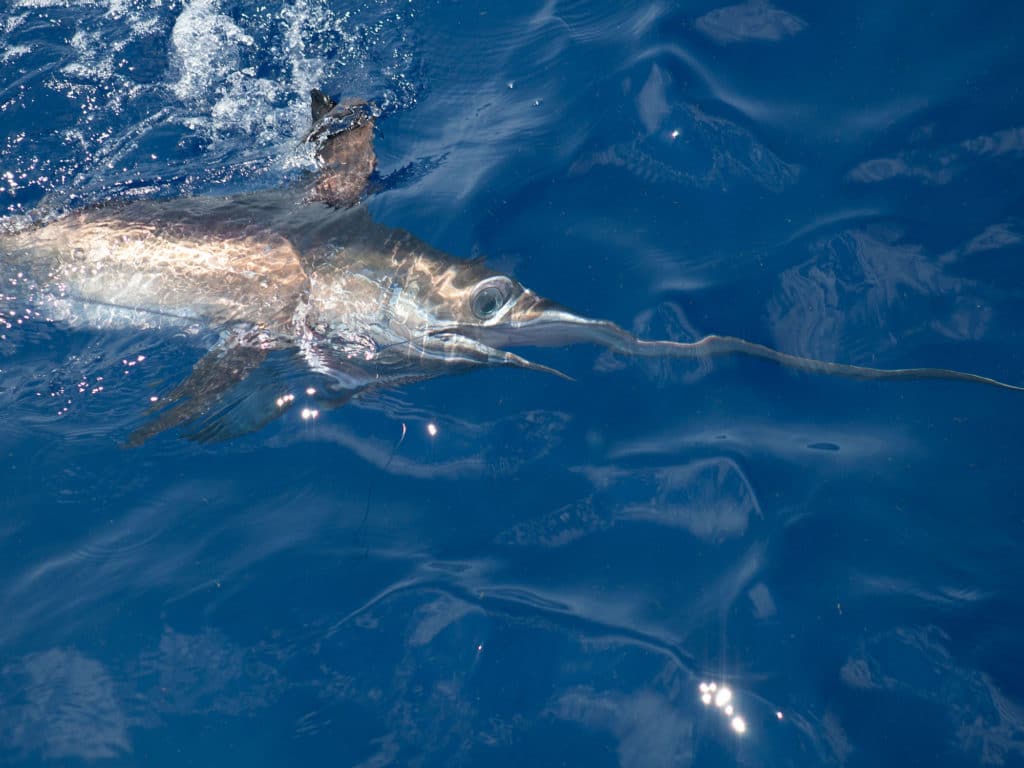
Predictably calm sea conditions make summer the perfect time to head far offshore to target swordfish. And it doesn’t matter whether you fish day or night.
Daytime swordfishing originated in the Florida Keys in the early 2000s, and has spread throughout the coastal United States. South Florida sword expert Bobby Boyle of R.J. Boyle Studio in Lighthouse Point has conducted seminars from Texas to New England. But Boyle still enjoys nighttime fishing in Florida, which he said hosts the best swordfishing in the world.
Catching Swordfish at Night
“If I wanted to put up numbers and just relax, I’d go at night,” Boyle says. Everyone fished for swordfish after dark in the late 1990s, when they discovered that the fish were plentiful enough to catch. A few years later, when Boyle and others used electric reels to drop baits 1,500 to 1,800 feet and catch fish weighing 300 or more pounds, anglers made the switch to daytiming.
“There was the recreational boom 25 years ago and everybody was so consumed with night fishing, you couldn’t even find a spot out there on a calm night to set up,” Boyle recalls. “When daytiming started (around 2004), there were advantages: You can go home at night and sleep. You can see what you’re doing. And the fish are bigger. So the reward sometimes can be greater in daytime fishing.”
Yet swordfish weighing 300 or more pounds can be caught at night. Boyle once caught a 439-pounder and a 237-pounder to win a tournament out of Miami.
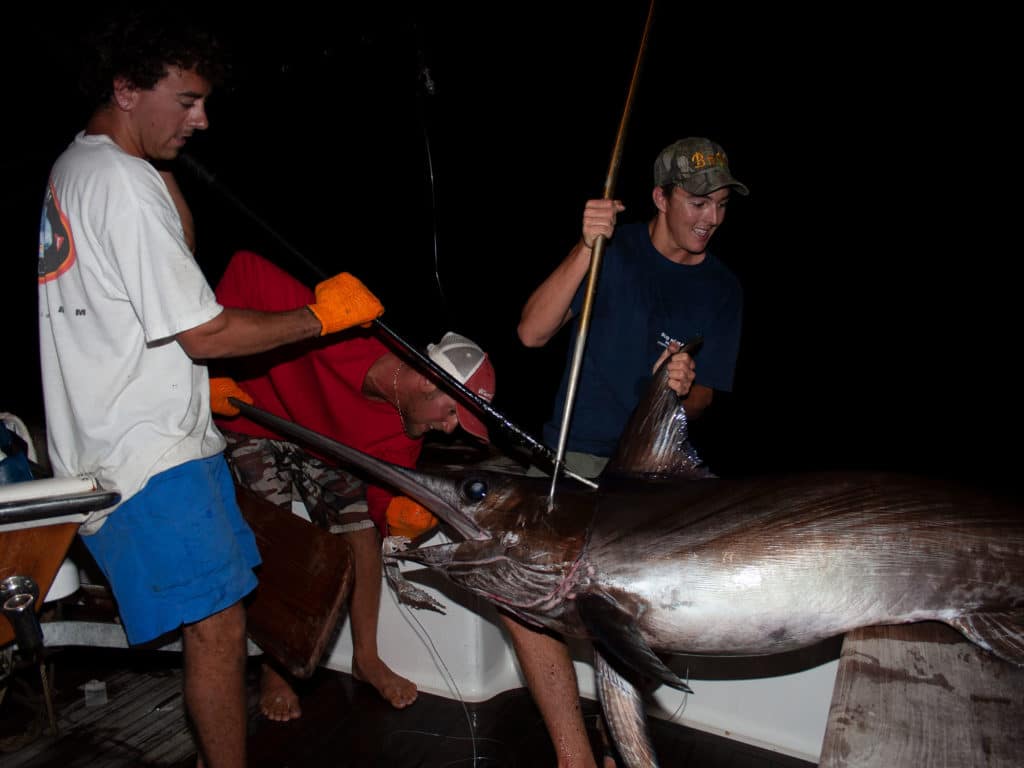
During the initial nighttime craze, virtually all anglers used live bait, primarily goggle-eyes and blue runners. Before that, everyone used rigged squid, and that’s what Boyle recommends using at night now. Daytime favorites include dolphin belly and bonito belly.
“If we didn’t catch live bait, we didn’t go out. If I go night fishing now, I don’t even bring live bait,” says Boyle, who makes up for that by constantly reeling up his squid 20 feet, then dropping them 20 feet so the squid appear to be moving.
Another change he made to his night fishing: He studies the bottom and fishes along drop-offs. “When we were night fishing before, we weren’t overly conscious of the bottom contour,” he explains. “Because we transitioned to daytime, where the bottom is important, now we also fish bottom contour (at night). It really makes a difference.”
At night, he uses a 50- or 80-pound rod with a two-speed conventional reel spooled with 80-pound braided line fished either standup or from a rod holder. That tackle also works during the day, but the majority of South Florida fishermen now use electric reels.
Some anglers vehemently reject the idea of using that extra power to work a fish, but electric reels can quickly retrieve a bait that gets hit but not eaten. In most cases, the swordfish rig also features a 10- to 15-pound lead or steel stick weight.
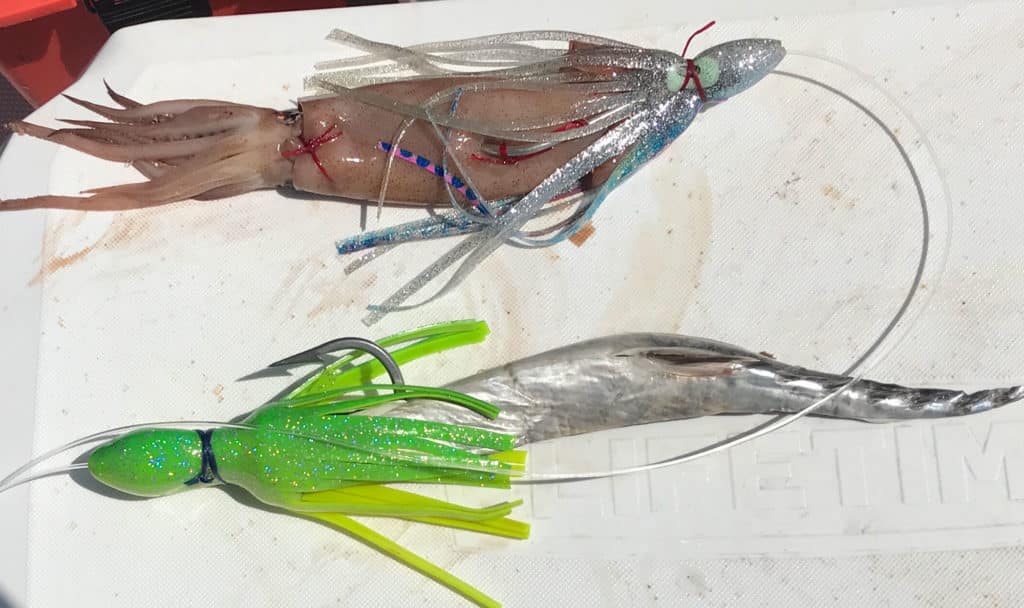
Electric Reels for Swordfish
Boyle has studied the art and science of daytime swordfishing with an electric reel, and he knows how much effort is involved in getting a bite and then getting a fish to the boat.
I took a trip with him, and his crew illustrated the skill still needed to catch a swordfish even with an electric reel. That morning, Boyle had a swordfish coming to the boat 12 minutes after the fish ate a piece of barracuda on the bottom in 1,600 feet off Hollywood, Florida. That’s when the swordfish sounded and the fight began.
The fish surged down 230 feet, then 400 feet. At the helm, John Barfield positioned the boat so the fishing line hung vertically. That allowed Boyle to bring up the fish 100 feet according to the line counter on his Lindgren-Pitman electric fishing reel.
All that line and more peeled off the reel as the swordfish swam down to 500 feet. With one hand on the reel’s spool to apply extra drag and his other hand on the line, Boyle patiently played the swordfish, which swam up and down and under the boat several times.
After 25 more minutes of give and take, the fish came up alongside the boat.
Mate Jeff Walls drove a harpoon just behind the swordie’s gill plate, Barfield gaffed the fish in the head, and then Boyle stuck it with a hand gaff. Together, the three pulled the fish, which Boyle estimated at just under 200 pounds, into the boat.
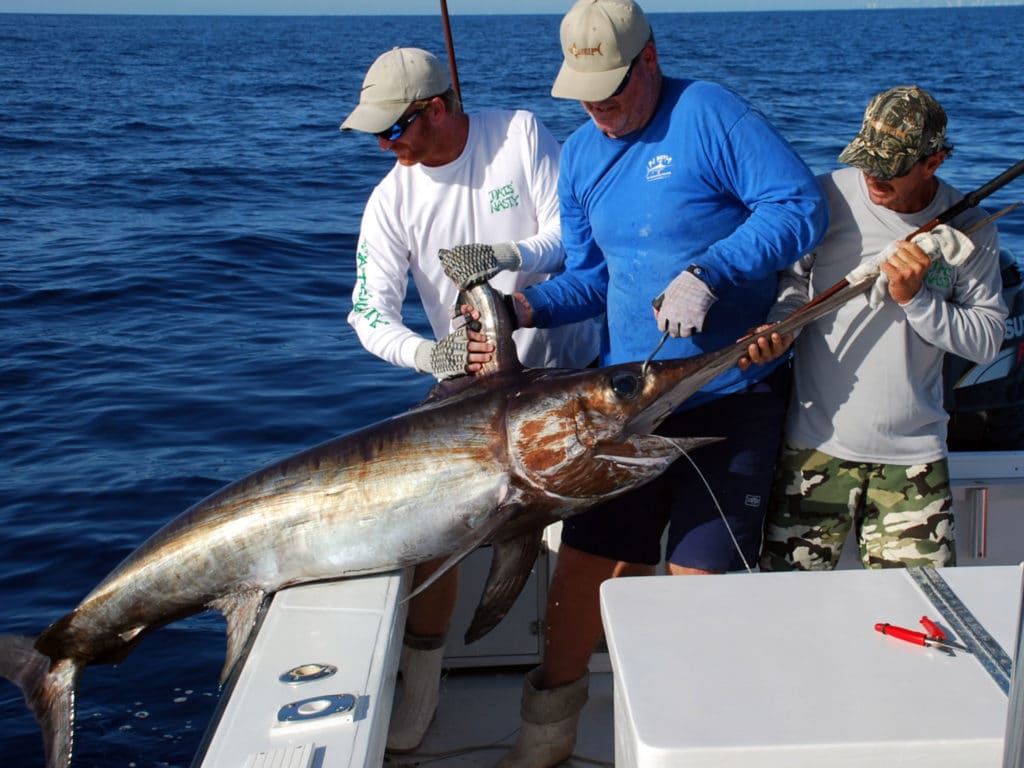
Although catching a swordfish on an electric reel is not as physically demanding as fighting the fish on a rod and reel, it can be just as thrilling and challenging. When Boyle had to give or retrieve line, Barfield spun the boat, and Walls, who let everyone know where the fish was headed, moved from one side of the boat to the other and back with the harpoon. “It’s like anything else: You’re playing the fish,” Barfield says.
Boyle spent a year experimenting with daytime dropping and taking notes on everything he did to figure out what worked best. He works so well with Barfield on the wheel that they can drop a bait on the edge of a ledge on the bottom — the most likely spot where a swordfish waits to ambush prey.
While Barfield keeps the boat positioned, Boyle eyes the rod tip. “If you miss the first tap of the rod, chances are you’re not going to catch that fish,” he says. “If a fish swats a bait, and it doesn’t do anything, he’s going to swim in another direction.”
When the rod tip twitches, the angler must raise or lower the bait to entice the swordie to try again. When Boyle sees a bite, he reels up for 10 seconds. If he gets another tap, he drops the bait, which creates a belly in the line allowing the fish to turn on the bait and swim off with it.
North Miami captain Dean Panos likes to fish a bait about 75 feet off the bottom. He drops the bait to the bottom every few minutes and reels it up again.
If he detects a bite, he uses his electric reel to retrieve the bait for about 10 seconds to see if the fish comes back. If it does, he keeps reeling the bait. He said he once had a swordfish tap the bait for 500 feet as it rose toward the surface.
Sure, that’s unusual, but at least it’s easy to see on a calm summer day.
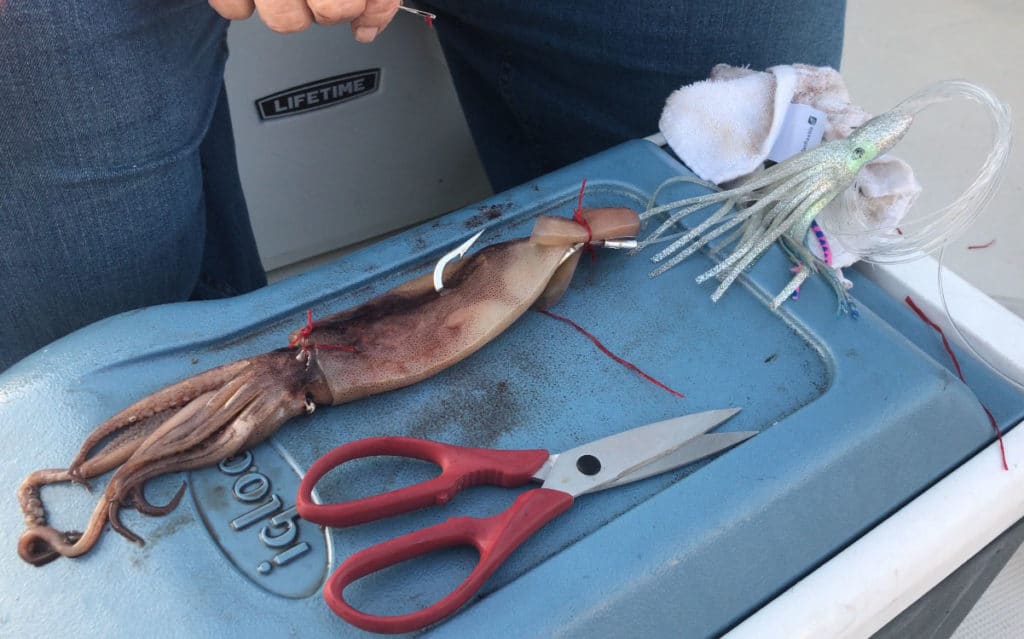
How to Rig a Squid to Catch Swordfish
Retired Miami captain Bouncer Smith prefers to swordfish with a 10- to 12-inch squid. He uses a rigging needle with 50- to 70-pound red waxed thread to secure the squid’s head to its body by going through the head to the mantle and then back through the head and mantle. He ties the thread to make the squid’s eyeballs stick out, and does the same thing on the other side of the squid.
“We used to shove the heads up inside the bodies, but we got more bites” on this setup, he says.
He threads an 11/0 J hook into the white side of the squid and through the other side with the hook eye about an inch down on the mantle. He runs thread through both sides, then through the hook eye and the mantle and ties a pyramid knot to secure the hook.
He repeats that process on the other side of the squid. He also runs thread through one side of the hook and back through on the other side and ties a pyramid knot to secure the shank of the hook.
“It looks like a lot of work, but when you figure that this bait’s going to be 2,000 feet from the boat, maybe 3,000 feet, and a broadbill swordfish is going to be trying to kill it, you don’t want it to fall off the hook when they nibble on it,” Smith says.
Smith slides a skirt over the squid and sews the skirt to the squid, going through both with thread and wrapping the thread once around the squid and tying it.
“This is really critical on two counts,” he says. “If you don’t sew the skirt down, the skirt might slide up the line. Down there in that low light, the swordfish is liable to attack the skirt and not even hit the bait with the hook in it. And secondly, the skirt makes sure that your bait enters the water smoothly and doesn’t spin.”








